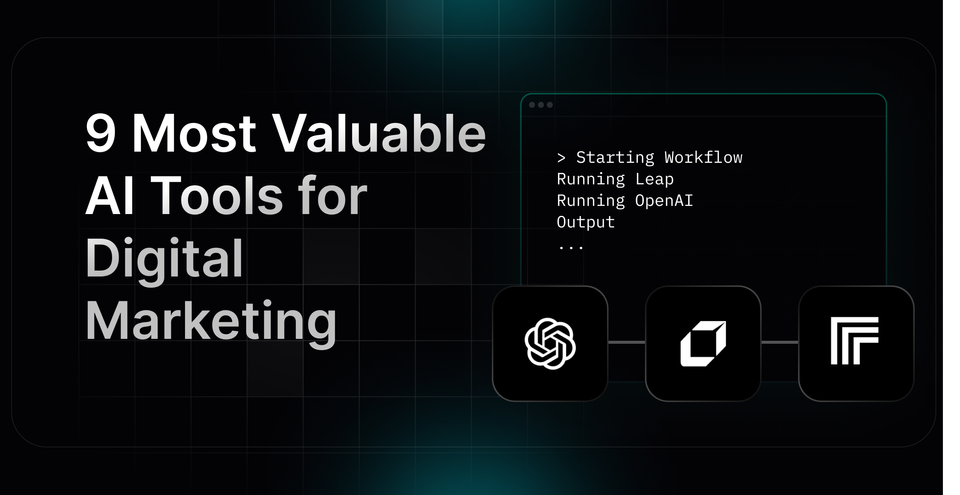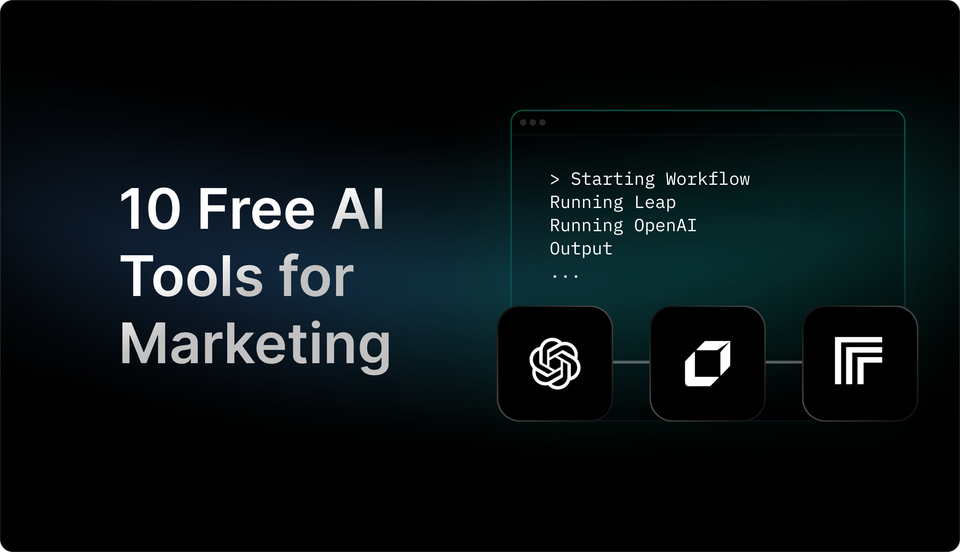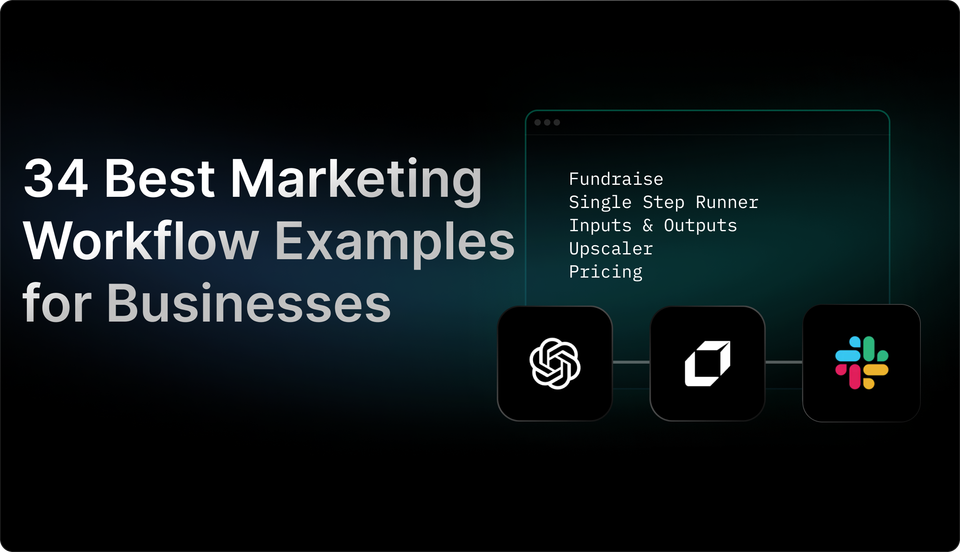Ultimate Guide To Creating A Successful Content Marketing Workflow
Craft compelling content effortlessly with our content marketing workflow. Streamline creation, distribution, and analysis for maximum impact.

In the vast digital landscape of today, where words and images seem to multiply at the speed of light, finding a content marketing workflow that cuts through the noise can feel like stumbling upon a hidden gem. Dear reader, I am here to guide you on a journey that will uncover the secrets to a successful content marketing workflow.
Picture this: a well-oiled machine seamlessly churning out captivating blog posts, compelling social media campaigns, and irresistible email newsletters. This is the power of a content marketing workflow, a carefully orchestrated symphony of creativity and strategy. In this blog, we will delve deep into the world of content marketing workflow, uncovering the key steps, best practices, and hidden shortcuts that will propel your brand to new heights. So grab a cup of coffee, cozy up in your favorite spot, and let's embark on this adventure together, unraveling the mysteries of the marketing workflow.

What Is A Content Marketing Workflow?

Content marketing has become an essential strategy for businesses seeking to engage with their target audience, build brand awareness, and drive customer acquisition. Without a well-structured and efficient process in place, the creation and distribution of content can quickly become chaotic and unproductive. This is where a content marketing workflow comes into play.
A content marketing workflow is a systematic approach that allows businesses to plan, create, and distribute content in a streamlined and organized manner. It encompasses all the stages involved in the content marketing process, from ideation and creation to promotion and analysis. By establishing a clear workflow, businesses can ensure that their content aligns with their overall marketing goals, resonates with their target audience, and achieves measurable results.
The Importance of a Content Marketing Workflow for Businesses
1. Enhanced Efficiency
A well-defined workflow eliminates confusion and reduces the chances of inefficiencies in content creation and distribution. By establishing clear roles and responsibilities, setting deadlines, and automating certain tasks, businesses can optimize their content marketing efforts and maximize their resources. This ultimately leads to improved productivity and cost-effectiveness.
2. Consistency and Brand Identity
A content marketing workflow ensures that businesses maintain a consistent brand voice, tone, and style across all their content. It provides guidelines for content creators, ensuring that the messaging aligns with the brand's values, mission, and target audience. Consistency in content establishes brand identity and fosters trust and loyalty among customers.
3. Targeted and Relevant Content
A content marketing workflow helps businesses understand their audience's preferences, pain points, and interests. By conducting thorough research and employing audience segmentation techniques, businesses can tailor their content to meet the specific needs of their target market. This targeted and relevant content increases engagement, drives conversions, and cultivates long-term customer relationships.
4. Improved Collaboration
Content marketing involves collaboration between various stakeholders, including writers, editors, designers, and SEO specialists. A content marketing workflow provides a framework for effective collaboration, enabling teams to work together seamlessly. With clear communication channels, feedback mechanisms, and approval processes in place, businesses can foster a culture of collaboration and creativity.
5. Measurable Results and Continuous Improvement
A well-designed content marketing workflow incorporates analytics and tracking mechanisms. By monitoring key performance indicators (KPIs) such as website traffic, conversions, and engagement metrics, businesses can measure the effectiveness of their content marketing efforts. This data-driven approach allows for continuous improvement, as businesses can identify what works and what doesn't, and make data-backed decisions to optimize their content strategies.
A content marketing workflow is a structured and systematic approach that allows businesses to plan, create, distribute, and analyze content effectively. By implementing a workflow, businesses can enhance efficiency, maintain brand consistency, create targeted content, improve collaboration, and achieve measurable results. In today's competitive digital landscape, a content marketing workflow is an indispensable tool for businesses striving to make a lasting impact.

Related Reading
- Content Marketing Workflows
- Ai For Small Business Marketing
- Email Marketing Workflows
- Digital Marketing Workflow
What Makes A Good Content Marketing Workflow

A well-designed content marketing workflow is essential for efficiently managing the creation, distribution, and performance tracking of content. It ensures that each step of the process is clearly defined, roles and responsibilities are assigned, and tasks are completed in a timely manner. By implementing a structured workflow, businesses can save time, minimize errors, and increase the overall effectiveness of their content marketing efforts.
1. Clear Goal Setting and Strategy Development
An effective content marketing workflow starts with clearly defined goals and a well-thought-out strategy. This involves understanding the target audience, conducting keyword research, and identifying the desired outcomes. By establishing specific objectives and aligning them with the overall business goals, you can create content that resonates with your audience and drives the desired results.
2. Content Ideation and Planning
Once the goals and strategy are in place, the next step is brainstorming and generating ideas for content. This can be done through internal discussions, competitor analysis, or customer feedback. The key is to identify topics that are relevant, engaging, and valuable to your target audience. These ideas should then be organized into a content calendar, which outlines the type of content, publication dates, and responsible team members.
3. Content Creation and Collaboration
The content creation phase involves writing, designing, and producing the actual content pieces. It is important to assign clear roles and responsibilities to team members to ensure smooth collaboration and accountability. Depending on the nature of your content, this may involve writers, designers, editors, and other specialists. By having a collaborative environment and effective communication channels, you can streamline the content creation process and maintain consistent quality.
4. Review and Approval Process
Before publishing or distributing content, it is crucial to have a review and approval process in place. This ensures that the content aligns with the brand voice, meets the desired quality standards, and complies with legal and regulatory requirements. Feedback should be provided in a constructive manner, and revisions should be incorporated as necessary. By involving key stakeholders in this process, you can prevent errors or inconsistencies from slipping through the cracks.
5. Distribution and Promotion
Once the content is finalized and approved, it is time to distribute and promote it across relevant channels. This may include sharing on social media, sending email campaigns, publishing on websites or blogs, or leveraging partnerships with influencers or industry publications. It is important to tailor the distribution strategy to each channel and continuously monitor the performance to optimize reach and engagement.
6. Performance Tracking and Analysis
A great content marketing workflow includes regular performance tracking and analysis. By measuring key metrics such as website traffic, conversion rates, social media engagement, and content downloads, you can evaluate the effectiveness of your content and make data-driven decisions to improve future campaigns. Analyzing the data allows you to identify what is working well and what needs adjustment, helping you refine your content marketing strategy over time.
A good content marketing workflow involves clear goal setting, thorough planning, efficient collaboration, meticulous review processes, targeted distribution, and continuous performance tracking. By implementing a well-defined workflow, businesses can maximize the impact of their content marketing efforts, drive engagement with their target audience, and achieve their desired business objectives.
Ultimate Guide On Creating A Successful Content Marketing Workflow

Content marketing has become an essential strategy for businesses to connect with their target audience and drive growth. Creating and managing an effective content marketing workflow can be a daunting task. This ultimate guide aims to provide businesses with a step-by-step process to create a successful content marketing workflow that maximizes results and efficiency.
1. Establishing Goals and Objectives
Before diving into content creation, it is crucial to define clear goals and objectives for your content marketing efforts. Whether it is increasing brand awareness, generating leads, or driving sales, having a clear vision will guide your content creation process.
2. Understanding Your Target Audience
To create content that resonates with your audience, you need to understand their needs, preferences, and pain points. Conduct thorough research, analyze customer data, and create buyer personas to gain insights into your target audience. This will help you tailor your content to their interests, resulting in higher engagement and conversions.
3. Creating a Content Calendar
A content calendar is an essential tool for organizing and planning your content marketing efforts. It allows you to schedule content creation, allocate resources, and maintain consistency. A well-structured content calendar ensures that you have a steady flow of content that aligns with your marketing objectives.
4. Content Ideation and Creation
Now comes the creative part – generating ideas and turning them into valuable content. Encourage brainstorming sessions with your team, leverage customer feedback, and stay up-to-date with industry trends to generate fresh and relevant content ideas. Ensure that your content addresses your audience's pain points, offers solutions, and provides valuable insights.
5. Content Optimization
Creating great content is just the first step; optimizing it for maximum visibility and reach is equally important. Incorporate relevant keywords, optimize meta tags, and create compelling headlines to improve your content's SEO. Ensure your content is easy to read, well-structured, and visually appealing to enhance user experience and encourage sharing.
6. Content Distribution
To reach a wider audience, you need to distribute your content through multiple channels. Utilize social media platforms, email marketing, guest blogging, influencer collaborations, and industry partnerships to amplify your content's reach. Tailor your distribution strategy to each channel, considering the preferences and behaviors of your target audience.
7. Engagement and Interaction
Content marketing is not just about broadcasting information; it's about building relationships with your audience. Encourage engagement by responding to comments, questions, and feedback. Foster a sense of community by initiating discussions, hosting webinars, and conducting polls to involve your audience in the content creation process.
8. Analyzing and Measuring Results
Regularly analyze and measure the performance of your content marketing efforts to determine what works and what doesn't. Monitor key metrics such as website traffic, conversions, social media engagement, and email open rates. Identify patterns, trends, and areas for improvement to refine your content marketing strategy.
9. Continuous Improvement
Content marketing is an ongoing process that requires constant learning and adaptation. Keep an eye on industry trends, consumer behavior, and emerging technologies to stay ahead of the curve. Continuously improve your content marketing workflow by incorporating lessons learned and experimenting with new ideas.
Creating a successful content marketing workflow requires careful planning, creativity, and a deep understanding of your target audience. By following the steps outlined in this ultimate guide, businesses can establish a robust content marketing workflow that drives engagement, conversions, and business growth. Embrace the power of content marketing and unleash your brand's potential.
How to Create a Good Content Creation Process and Implement It

In today's digital age, content marketing has become a vital strategy for businesses to attract and engage their target audience. With the increasing demand for quality content, it's crucial for businesses to have an efficient content creation process in place. This guide will walk you through the steps to create a good content creation process and implement it effectively.
1. Define Your Content Marketing Goals
Before diving into content creation, it's essential to establish clear goals for your content marketing efforts. By defining your objectives, whether it's to increase brand awareness, generate leads, or drive conversions, you can tailor your content creation process to align with these goals.
2. Identify Your Target Audience
Understanding your target audience is crucial for creating content that resonates with them. Conduct thorough research to identify their needs, preferences, and pain points. This information will guide your content creation process and ensure that your content is valuable and relevant to your audience.
3. Develop a Content Strategy
A well-defined content strategy serves as the foundation for your content creation process. It outlines the types of content you'll produce, the platforms you'll use, and the frequency of publication. Your content strategy should also align with your overall marketing and business goals.
4. Create an Editorial Calendar
An editorial calendar is a tool that helps you plan and organize your content creation process. It allows you to schedule content creation, set deadlines, and maintain consistency. Include important dates, events, and holidays relevant to your industry to ensure timely and relevant content.
5. Conduct Keyword Research
Keyword research is essential for optimizing your content for search engines and improving its visibility. Identify relevant keywords related to your business and incorporate them naturally into your content. Use tools like Google Keyword Planner or SEMrush to find high-value keywords with low competition.
6. Generate Content Ideas
Brainstorming and generating content ideas is a crucial step in the content creation process. Encourage collaboration among your team members and use tools like brainstorming sessions, content ideation tools, or content briefs to generate a wide range of creative ideas.
7. Plan Content Creation Workflow
Creating a streamlined workflow ensures that your content creation process runs smoothly and efficiently. Define clear roles and responsibilities for each team member involved in the process, such as content ideation, writing, editing, design, and publishing. Establish deadlines and communication channels to foster collaboration and accountability.
8. Develop Content Creation Guidelines
Content creation guidelines set the standards and expectations for your content creators. Include guidelines for tone of voice, writing style, formatting, and visual elements. These guidelines ensure consistent branding and quality across all your content.
9. Implement Content Creation Tools
Leverage technology to streamline your content creation process. There are numerous tools available to assist with content ideation, writing, editing, project management, and content distribution. Some popular tools include Trello, Asana, Grammarly, Canva, and Hootsuite.
10. Create a Review and Approval Process
Establish a review and approval process to maintain the quality and accuracy of your content. Assign dedicated team members or stakeholders to review content for grammar, spelling, factual accuracy, and adherence to brand guidelines. Set deadlines for feedback and revisions to keep the content creation process on track.
11. Measure and Analyze Performance
Regularly measure and analyze the performance of your content to assess its effectiveness and make data-driven improvements. Use analytics tools like Google Analytics, social media insights, and email marketing metrics to track key performance indicators such as engagement, conversions, and ROI.
12. Continuously Optimize Your Content Creation Process
As your business evolves and the content marketing landscape changes, it's essential to continuously optimize and refine your content creation process. Stay updated with industry trends, gather feedback from your audience, and experiment with new strategies and formats to stay ahead of the competition.
By following these steps and implementing a robust content creation process, your business can produce high-quality, engaging content that resonates with your target audience and drives tangible results. Stay committed to refining your process and adapting to changing market dynamics to ensure long-term success in your content marketing efforts.
Optimizing Your Content Marketing Workflow To Your Company

Creating a content marketing workflow that is specifically tailored to the unique needs and goals of your organization is crucial for success in today's competitive digital landscape. By customizing your workflow, you can ensure that your content is aligned with your business objectives, resonates with your target audience, and maximizes your return on investment. We will explore how you can customize your content marketing workflow to suit the specific needs and goals of your organization.
1. Defining Your Objectives: Crafting an Effective Strategy
Before diving into the execution of your content marketing strategy, it is essential to define your objectives. By clearly articulating your business goals, you can create a roadmap that will guide your content creation process. Whether your primary objective is to increase brand awareness, generate leads, or drive conversions, your content marketing workflow should be built around these specific goals.
2. Understanding Your Target Audience: Creating Relevant and Engaging Content
To effectively customize your content marketing workflow, you must have a deep understanding of your target audience. Conducting thorough market research and creating buyer personas will help you gain insights into the preferences, pain points, and needs of your audience. By tailoring your content to address these specific needs, you can establish a genuine connection with your audience and drive meaningful engagement.
3. Mapping Out the Content Creation Process: Streamlining Efficiency
Once you have defined your objectives and understood your audience, it is time to map out the content creation process. This involves breaking down the workflow into individual tasks and assigning responsibilities to team members. By creating a clear and organized workflow, you can streamline efficiency and ensure that everyone involved understands their role and responsibilities.
4. Content Ideation and Planning: Fueling Creativity
To create high-quality content that resonates with your audience, it is important to prioritize content ideation and planning. By brainstorming ideas and conducting research, you can ensure that your content is relevant, timely, and valuable. Establishing an editorial calendar will help you stay organized and ensure a consistent flow of content.
5. Content Creation and Optimization: Maximizing Impact
The process of content creation involves writing, designing, and producing the actual content assets. To customize your workflow, it is essential to identify the specific formats and channels that align with your audience preferences and business objectives. Optimizing your content for search engines and social media platforms will increase its visibility and reach.
6. Distribution and Promotion: Reaching Your Audience
The success of your content marketing efforts relies on effective distribution and promotion. By leveraging various channels such as social media, email marketing, and influencer partnerships, you can reach your target audience and amplify your content's impact. Customizing your distribution strategy to suit your audience's preferred platforms will ensure maximum engagement and visibility.
7. Measurement and Analysis: Iterative Improvement
To continuously improve your content marketing efforts, it is crucial to measure and analyze the performance of your content. By tracking key metrics such as website traffic, engagement rates, and conversion rates, you can gain insights into what is resonating with your audience and make data-driven decisions. By regularly reviewing and optimizing your workflow based on these insights, you can achieve ongoing success.
Customizing your content marketing workflow is essential to meet the unique needs and goals of your organization. By defining your objectives, understanding your audience, mapping out the content creation process, prioritizing ideation and planning, optimizing content creation, distributing effectively, and measuring performance, you can create a tailored workflow that maximizes your success in the dynamic world of content marketing.
Common Challenges When Implementing A Content Marketing Workflow & How To Overcome Them

1. Lack of Clearly Defined Goals and Objectives
One of the most common challenges faced when implementing a content marketing workflow is the lack of clearly defined goals and objectives. Without a clear understanding of what the content marketing strategy aims to achieve, it becomes difficult to create relevant and effective content.
To overcome this challenge, it is essential to establish specific, measurable, attainable, relevant, and time-bound (SMART) goals. These goals should align with the overall business objectives and provide a clear direction for the content marketing efforts.
2. Insufficient Planning and Strategy Development
Another challenge in implementing a content marketing workflow is the lack of proper planning and strategy development. Without a well-thought-out plan, content creation becomes haphazard, resulting in inconsistent messaging and ineffective content distribution.
To overcome this challenge, it is crucial to invest time and effort in developing a comprehensive content marketing strategy. This strategy should include target audience identification, content themes and topics, distribution channels, and key performance indicators (KPIs) to measure success.
3. Limited Resources and Budget Constraints
A common challenge faced by many organizations is limited resources and budget constraints. Content marketing requires investments in content creation, distribution, and promotion, which can strain resources if not managed carefully.
To overcome this challenge, it is essential to prioritize content marketing efforts based on the available resources. This may involve focusing on high-impact content formats, leveraging user-generated content, and exploring cost-effective distribution channels. Seeking partnerships or collaborations with complementary brands can help expand reach and share resources.
4. Lack of Collaboration and Communication
Effective content marketing workflow requires collaboration and communication among various teams and stakeholders, including content creators, designers, SEO specialists, and social media managers. The lack of collaboration and communication can lead to delays, misunderstandings, and inconsistent content delivery.
To address this challenge, it is crucial to establish clear communication channels and foster a collaborative environment. Regular team meetings, project management tools, and clear guidelines for content creation and approval can help streamline the workflow and ensure everyone is on the same page.
5. Inadequate Performance Measurement and Analysis
Without proper measurement and analysis, it is challenging to determine the effectiveness of the content marketing efforts and make data-driven decisions. This can hinder the optimization of the workflow and limit the ability to achieve desired outcomes.
To overcome this challenge, it is important to establish relevant KPIs and use analytics tools to track and measure the performance of the content. Regularly reviewing and analyzing the data will provide insights into what is working and what needs improvement, allowing for continuous optimization of the content marketing workflow.
By addressing these common challenges and implementing strategies to overcome them, organizations can establish an effective content marketing workflow that drives engagement, generates leads, and ultimately achieves business objectives.
Best Practices for Designing An Effective Content Marketing Workflow

Creating an effective content marketing workflow is crucial for streamlining your content production process, maximizing efficiency, and ensuring consistent quality. We will explore the best practices for designing an effective content marketing workflow that drives results.
1. Define Your Goals and Objectives
Before designing your content marketing workflow, it is essential to clearly define your goals and objectives. What do you want to achieve with your content marketing efforts? Are you aiming to increase brand awareness, drive website traffic, generate leads, or nurture existing customers? By understanding your goals, you can align your workflow to deliver the desired outcomes.
2. Conduct Thorough Audience Research
To create content that resonates with your target audience, conduct thorough audience research. Understand their demographics, needs, preferences, and pain points. This information will help you tailor your content marketing efforts to address their specific needs, ultimately driving better engagement and conversions.
3. Develop a Content Strategy
A well-defined content strategy is the foundation of an effective content marketing workflow. It provides a roadmap for your content creation, distribution, and promotion efforts. Your content strategy should outline your target audience, content themes, formats, distribution channels, and key performance indicators (KPIs) to measure success.
4. Create an Editorial Calendar
An editorial calendar is a crucial tool for organizing and planning your content production. It helps you maintain a consistent publishing schedule and ensure that your content aligns with your overall content strategy. Determine the frequency of content publication, assign responsibilities to team members, and establish deadlines to keep everyone on track.
5. Establish a Content Creation Process
To streamline your content creation process, establish a clear workflow that outlines the steps involved from idea generation to publishing. Determine who will be responsible for each task, such as ideation, research, writing, editing, design, and optimization. By clearly defining roles and responsibilities, you can avoid duplication of work and ensure a smooth content creation process.
6. Develop a Content Approval Process
Having a well-defined content approval process is crucial for maintaining consistency and quality in your content marketing efforts. Establish clear guidelines for reviewing and approving content, including who needs to review it, what criteria to consider, and how feedback should be provided. This process will ensure that content meets your brand standards before it is published.
7. Utilize Content Collaboration Tools
Collaboration is key to an effective content marketing workflow. Utilize content collaboration tools, such as project management platforms or content management systems, to streamline communication and enhance team collaboration. These tools enable real-time collaboration, task assignment, file sharing, and version control, ensuring everyone is on the same page.
8. Implement a Content Distribution Strategy
Creating great content is just the first step. To maximize its impact, develop a robust content distribution strategy. Identify the channels and platforms where your target audience spends time, such as social media, email marketing, influencers, or industry publications. By strategically distributing your content, you can amplify its reach and drive more engagement.
9. Monitor and Analyze Performance
Regularly monitor and analyze the performance of your content marketing efforts. Track key metrics, such as website traffic, conversion rates, engagement, and social shares, to assess the effectiveness of your workflow. Use these insights to refine your strategy, optimize content, and improve future campaigns.
10. Continuously Optimize Your Workflow
A content marketing workflow is not a one-time creation; it should be continuously optimized based on feedback, data, and evolving industry trends. Regularly review your workflow, seek input from your team, and stay updated with industry best practices to ensure your content marketing efforts remain effective and efficient.
Designing an effective content marketing workflow requires careful planning, collaboration, and continuous improvement. By following these best practices, you can streamline your content production process, enhance team efficiency, and achieve your content marketing goals. Embrace the power of a well-designed workflow and watch your content marketing efforts soar.
Related Reading
- Marketing Automation Workflows
- Marketing Workflow Management
- Digital Marketing Agency Workflow
- Digital Marketing Workflows
- Marketing Workflow Examples
Create Game-changing Automation Today With Leap’s AI Workflows
Streamlining your content marketing workflow is essential for staying organized, efficient, and productive. With the help of Leap Workflows, you can take your content marketing efforts to the next level by harnessing the power of AI automation. Let's explore how Leap Workflows can revolutionize your content marketing process.
Automate Document Summarization for Time-Saving Efficiency
As a content marketer, you likely spend a significant amount of time reading and analyzing documents. Leap Workflows can automate the process of document summarization, allowing you to extract key information quickly and efficiently. By leveraging AI text models, Leap can generate concise summaries, enabling you to grasp the main points of any document in a fraction of the time. This feature is especially valuable when conducting research or reviewing lengthy reports, as it saves you precious hours that can be allocated to more creative and strategic tasks.
Enhance Multilingual Capabilities with AI Voice Translation
In an increasingly globalized world, catering to a diverse audience is crucial for content marketers. Leap Workflows offers AI voice translation, enabling you to effortlessly communicate with your target audience in multiple languages. Whether you're creating podcasts, videos, or webinars, the ability to provide real-time translation ensures that your content reaches a wider audience. By eliminating language barriers, Leap empowers you to expand your reach and connect with customers on a global scale.
Effortlessly Transcribe Calls with AI Call Transcription
If you frequently conduct interviews or record client calls as part of your content marketing strategy, Leap Workflows' AI call transcription feature is a game-changer. Instead of spending hours manually transcribing conversations, Leap automates the process using advanced speech recognition technology. Simply upload your audio file, and Leap will generate accurate transcriptions in a matter of minutes. This not only saves you time but also ensures that you have a detailed record of important discussions and interviews.
Create Eye-Catching Visuals with AI Avatar and Asset Generation
Visual content plays a crucial role in content marketing, capturing attention and conveying messages effectively. Leap Workflows offers AI avatar and asset generation, allowing you to create captivating visuals without the need for extensive design skills. By leveraging AI image models, Leap enables you to generate custom illustrations, infographics, and even animated videos. This empowers you to create visually stunning content that stands out from the competition, all while saving valuable time and resources.
Automate SEO Optimization for Improved Search Rankings
Search engine optimization (SEO) is a vital component of content marketing, as it determines how easily your audience can find your content online. Leap Workflows integrates seamlessly with SEO tools, enabling you to automate key optimization tasks. From keyword research to on-page optimization, Leap can assist you in optimizing your content for search engines. By automating these processes, you can focus on creating high-quality content that resonates with your target audience, while Leap takes care of the technical aspects of SEO.
Try Leap's Workflows Tool for Free Today!
Are you ready to supercharge your content marketing workflow? With Leap Workflows, you can automate repetitive tasks, enhance your multilingual capabilities, and create visually stunning content effortlessly. Don't miss out on the opportunity to streamline your content marketing process and unlock endless possibilities with AI automation. Try Leap's Workflows tool for free today and experience the transformative power of intelligent automation. Your content marketing workflow will never be the same again.




